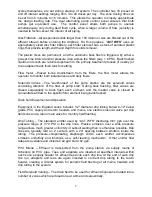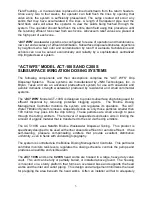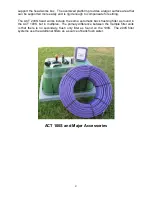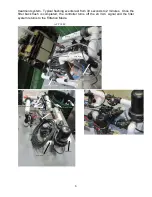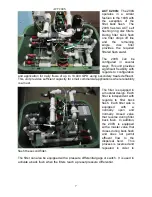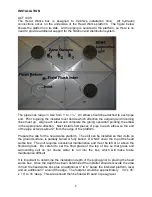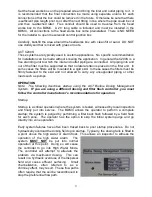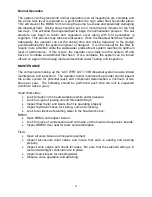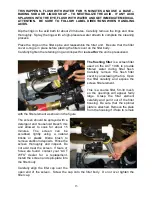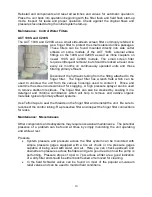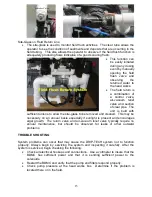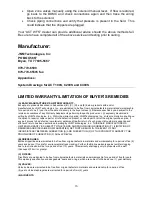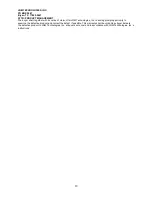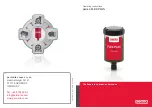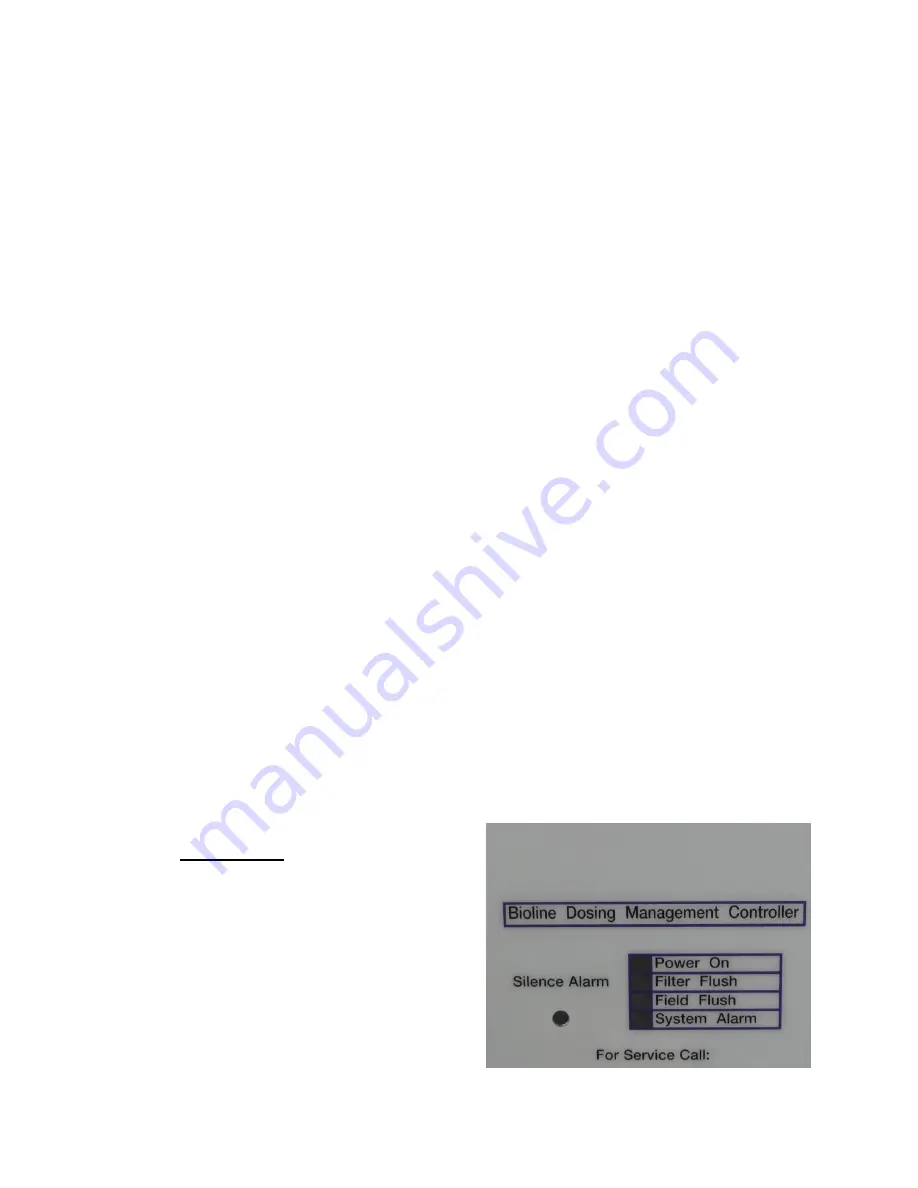
9
Set the head works box on the prepared site and bring the inlet and outlet piping to it. It
is recommended that the final connection be made using separate unions for each
connection so that the box could be removed in the future. Otherwise be sure that there
is sufficient pipe length prior to or after the next fitting in line where the pipe could be cut
and then re-attached later. Flex conduit should be used to traverse from the head
works box to the BDMC. A 20’ long cable is included and must be installed in the
BDMC. All connections to the head works box come preinstalled. There is NO NEED
for the installer to open the solenoid control junction box.
Carefully, backfill the area around the headworks box with clean fill or sand. DO NOT
use cloddy soil that is mixed with grass or roots.
ACT C200S
These systems are typically used in custom applications. No specific recommendation
for installation can be made without knowing the application. In general the C200S is a
free standing unit to which the inlet and outlet piping are connected. All piping into and
out of the filter must be supported so that no lateral strain is placed on the filter unit. In
some cases the filters will be mounted to a rigid skid. In these cases the filters must be
firmly fastened to the skid and not allowed to carry any unsupported piping or other
loads such as pumps.
OPERATION
Note: The following describes startup using the ACT Bioline Dosing Management
System.
IF
you are using a different dosing and filter flush controller, you must
follow the controller manufacturer’s recommendations for operation
.
Startup
Startup is a critical operation where the system is tested, witnessed by local inspectors
and finally put into service. The BDMC allows the operator to perform a complete
startup; the system is purged by performing a filter back flush followed by a field flush
for each zone. The operator has the option to skip the initial system purge and go
directly into zone operation.
Early system failures have often been traced back to poor startup procedures. Do not
hydraulically overload the dosing field upon startup. Typically, the dosing tank is filled to
a point above the high water or alarm float. This allows an inspector to witness the
operation of the high water alarm. The
system
MUST NOT
be put into normal
operation at this point. Doing so will cause
the controller to go into High Water Mode.
The controller will attempt to alleviate the
problem via maximized dosing. This can
result in a hydraulic overdose of the dispersal
field and cause effluent surfacing. Small
channelization, often referred to as a
chimney effect, may result. These flow paths
often require that the soil be reconditioned to
stop the preferential flow path.


